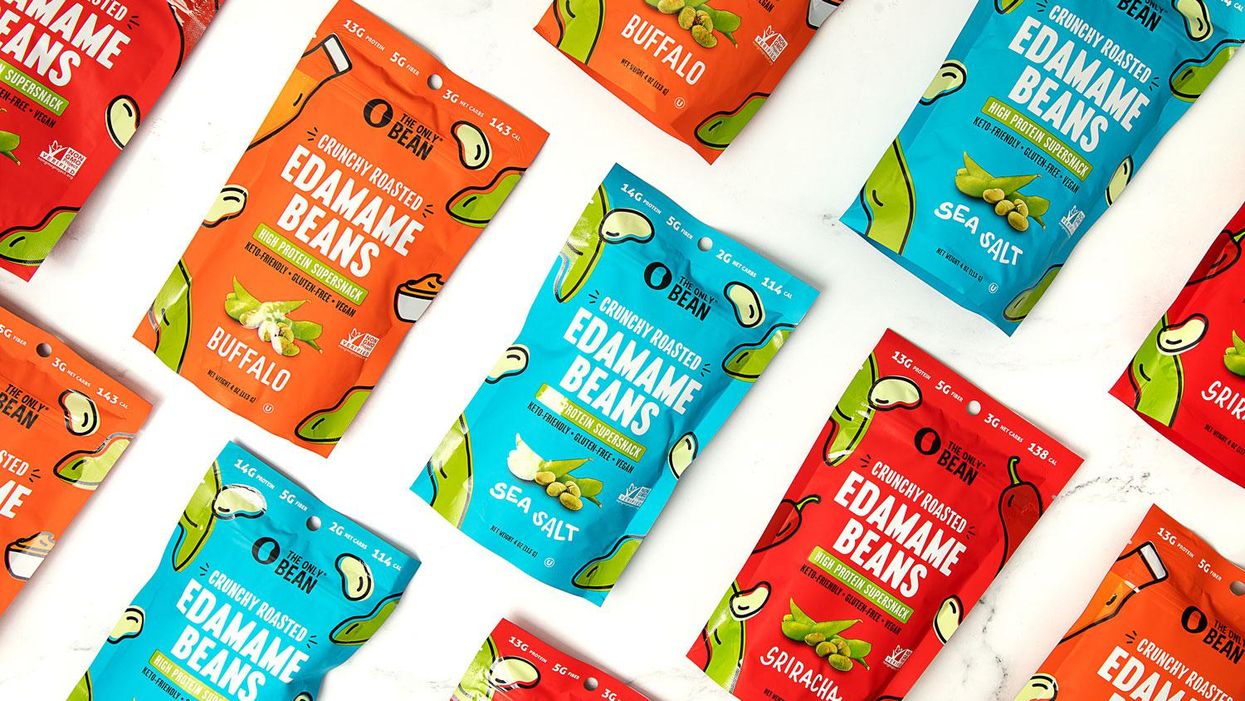Building a brand is a continuous cycle.
Launch a product, get feedback, refine the product and expand.
This can be applied in different stages, but what’s important is that a team keeps learning.
It's an approach that has helped the team at The Only Bean as they grow a plant-based food company.
For its latest launch, the brand is rolling out a line of snacks made from edamame beans into retail stores. The crunchy, roasted “super snacks” are high in protein and fiber, and come in three flavors: sea salt, sriracha and buffalo.
It’s a big moment for the brand. Along with the products appearing on shelves, team members are heading to tradeshows this spring such as Sweets and Snacks and ShopTalk, where The Current caught up with cofounder Brian Lai.
In an interview, Lai shared that the debut has been a year in the making. That's by design.
Initially, the company released the snacks through Amazon. This helped to gain initial sales. It also put the products in the hands of customers, which provided The Only Bean with insights that the team put to work as they continued to develop the product.
“Our strategy is to launch in ecommerce first, get feedback and modify the product if needed,” Lai said. “Once the product is ready, then we launch into retail.”
For the edamame beans, the next stop was Costco. In January, the snacks made it onto store shelves in Texas, San Diego, Colorado, Nevada, Arizona, Arkansas, Kansas, Louisiana, and Oklahoma. They sold out in a month.
Now, they're ready for grocery stores and wider retail. The product will be entering more than 200 Meijer stores in the Midwest in the coming months (Find locations here). This came after collecting data on the profile of the customers buying the products, and where they were located. So the initial launch through ecommerce helped to refine not just the snacks, but also the go-to-market strategy.
“With a year of sales and data we can see which retailers we should target, and make sure it’s a success,” Lai said.
It’s the continuation of an approach the brand has applied since it started.

(Image courtesy of The Only Bean.)
Founded in 2017, The Only Bean brought together Lai’s experience in ecommerce, cofounder Kristine Yang’s retail acumen and the expertise of food scientists who worked on development of Kellogg’s Special K and plant-based food at Morningstar Farms.
First came the concept for the brand, and they settled on a singular approach: The products would be made entirely from beans.
“We decided to focus around beans because they’re one the most nutritious crops available,” Lai said. “They’re also very sustainable, and there are a lot of different food items that can be made with beans.”
One of the food scientists, who is a family friend, had developed a pasta product and asked them about developing it into a commercial product.
They saw room in the market: A product that was gluten free, vegan, non-GMO and keto-friendly aligned with the healthier eating habits Americans want to adopt. Yet they were still undecided on whether to launch it as a company.
So they put it in front of people. The key moment came at a Michigan State University-organized tradeshow called Making it in Michigan. They got a great response.
“From that show we got a lot of feedback that it was a very innovative product,” Lai said. “We talked to buyers, who said, ‘Let us know when you’re ready.’”
The interest offered validation: “We could build a business around it,” Lai said.
It was valuable input that propelled The Only Bean to launch. Eventually, the team grew distribution of the pasta product to 1,000 retail locations.
Going forward, the company will continue to focus on ecommerce alongside expanding in brick-and-mortar. After all, the digital channel is growing, including in grocery stores that are seeking to bolster their own digital stores. The brand also sells direct-to-consumer through its website.
Both are important, but for a brand that is just launching a product, there can also be a question of where to invest resources. Again, the four-person team is taking a stepwise approach in this area. Momentum in one segment of ecommerce can lead to growth in another.
“If you’re opening on a marketplace like Amazon.com, it’s like opening a shop in one of the busiest malls in the world,” Lai said. “You have a lot of traffic, you just have to convince them to come to your store. Opening your own DTC website is kind of like opening a store in the middle of nowhere and then trying to convince people to drive to your store, which is a lot more difficult. We focus on the marketplaces where the people are already shopping, and then our strategy later on will be, once you build the brand equity, get the product in front of a lot of people, then you can give people a reason to go to your store.”
Along the way, they will keep learning as much as they can from customers.
“We’re constantly trying to improve,” Lai said.













